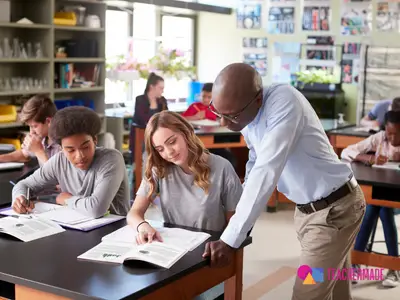Are you looking for the Classworks Special Education program from TouchMath? Click here to go to their site.
Are you looking for the Classworks Special Education program from TouchMath? Click here to go to their site.
Have you ever had one of those days in your classroom when the questions just don’t stop coming, when no matter how many times you explain a topic, it seems that there’s still a lot that the students didn’t catch? Yep, we’ve all had those days!
One way to combat that barrage of never-ending questions is to shift some of the responsibility for learning onto the students. With some targeted and strategic instruction, you can help your students assume a bigger role in their own learning, even if it feels like you’re starting from absolute zero.
You can use the “I Do, We Do, You Do” method to help wean students away from direct and explicit classroom instruction so that they can explore the skills and processes that you’re teaching on a more individual level.

In education, the “I Do, We Do, You Do”also known as the “gradual release of responsibility method,” is a form of scaffolded instruction that teachers can use to teach a skill or process.
Here, the “I” is the you (the teacher), and the “you” is your students. The process is all in the name: First, the teacher models the skill or process. Then, the teacher offers guided support as the students complete the skill or process. Finally, the students apply the skill or complete the process on their own.
Think of a huge construction project, like a skyscraper. The crew doesn’t just start stacking bricks to grow the building floor after floor. Instead, they set up the skeleton and cover it with a scaffold. Then, they add the bricks and fill out the building, and as each floor is finished, they remove the scaffolding and move on to the next section of the project.
You can use that same method in your teaching! Scaffolded instruction — sometimes called “scaffolding” — comes from the work of Vygotsky and focuses on moving students toward more independent learning. The idea is that each student operates in what Vygotsky calls a “zone of achieved development,” which includes all of the skills and knowledge the student has already mastered. Just beyond this is the student’s “zone of proximal development,” into which the student can expand their skills and understanding with help and input from the instructor.
Scaffolding is instruction designed to help the student expand their knowledge, understanding, and skills by guiding them from “What I can do” into “What I can do with help.” Eventually, as the need for help diminishes, their zone of achieved development grows, along with their knowledge and understanding of the skill you’re teaching.
The main goal of using the “I Do, We Do, You Do” method is twofold:
Here are the three key steps for successfully implementing the “I Do, We Do, You Do” method:
Start by explaining and modeling the concept you’re teaching. Try using metacognitive interventions such as think-aloud and self-reflective questions to better model not only the application of the skill or process you’re teaching, but also the underlying thought processes that accompany the knowledge. You may model more than once, based on the complexity of the content and the needs of your students.
Next, give students the chance to practice the skill or process with plenty of guided support. Guided support can include interactive directions, prompts or guiding questions, clues, and/or just-in-time hints or reminders at points in the process where students tend to struggle.
Finally, set your students free to apply the things they’ve learned. Offer relevant and related problems and/or questions, and watch as your students follow the model and guidance you’ve provided. In this step, the teacher’s role is one of assessment rather than instruction.
Here are some general examples of the “I Do, You Do, We Do” method in different subject areas:
Of course, this list is not exhaustive! But you can see how procedural knowledge and transferable skills are well-suited for the “I Do, We Do, You Do” method.